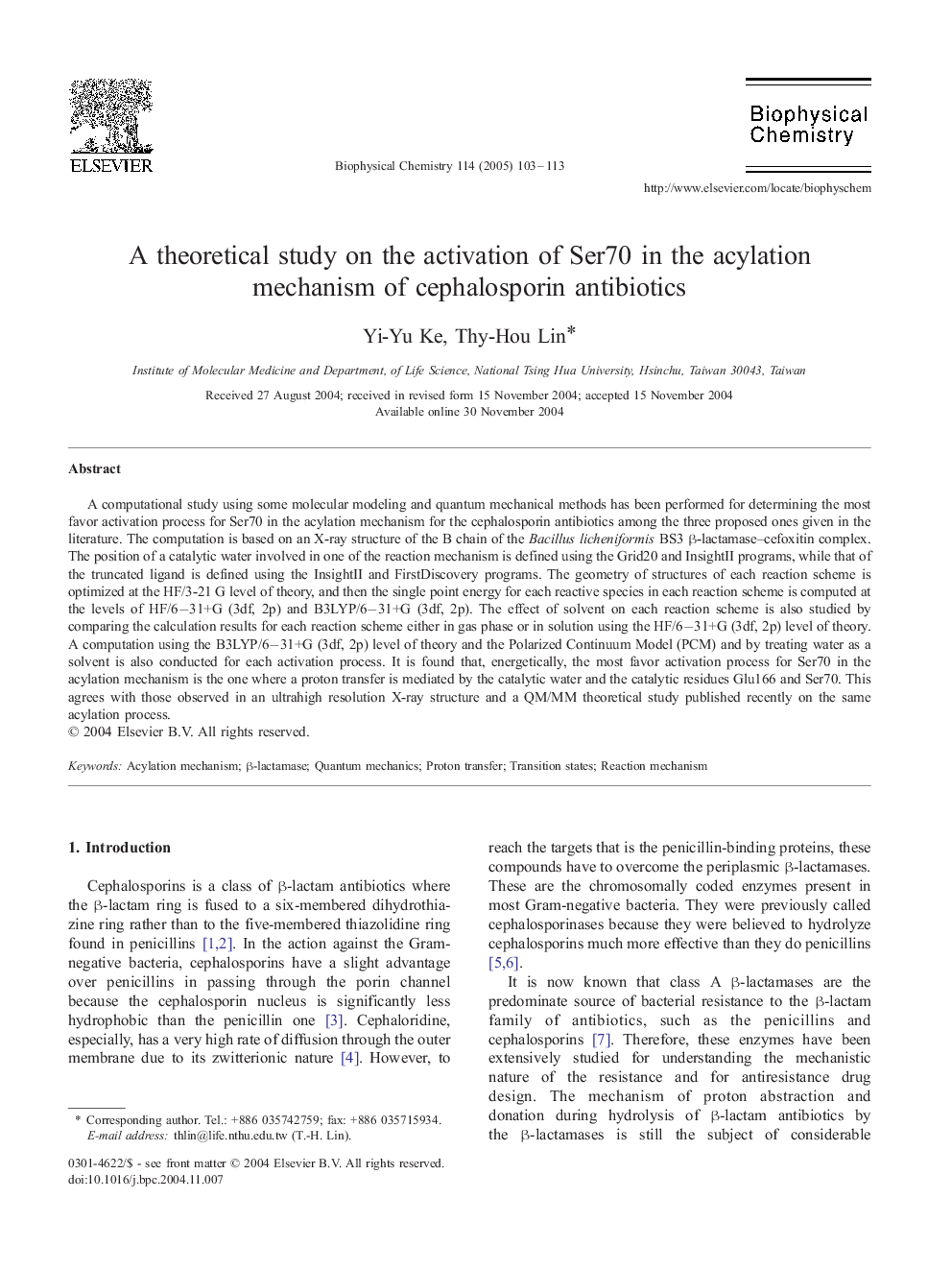| Article ID | Journal | Published Year | Pages | File Type |
|---|---|---|---|---|
| 9573360 | Biophysical Chemistry | 2005 | 11 Pages |
Abstract
A computational study using some molecular modeling and quantum mechanical methods has been performed for determining the most favor activation process for Ser70 in the acylation mechanism for the cephalosporin antibiotics among the three proposed ones given in the literature. The computation is based on an X-ray structure of the B chain of the Bacillus licheniformis BS3 β-lactamase-cefoxitin complex. The position of a catalytic water involved in one of the reaction mechanism is defined using the Grid20 and InsightII programs, while that of the truncated ligand is defined using the InsightII and FirstDiscovery programs. The geometry of structures of each reaction scheme is optimized at the HF/3-21 G level of theory, and then the single point energy for each reactive species in each reaction scheme is computed at the levels of HF/6â31+G (3df, 2p) and B3LYP/6â31+G (3df, 2p). The effect of solvent on each reaction scheme is also studied by comparing the calculation results for each reaction scheme either in gas phase or in solution using the HF/6â31+G (3df, 2p) level of theory. A computation using the B3LYP/6â31+G (3df, 2p) level of theory and the Polarized Continuum Model (PCM) and by treating water as a solvent is also conducted for each activation process. It is found that, energetically, the most favor activation process for Ser70 in the acylation mechanism is the one where a proton transfer is mediated by the catalytic water and the catalytic residues Glu166 and Ser70. This agrees with those observed in an ultrahigh resolution X-ray structure and a QM/MM theoretical study published recently on the same acylation process.
Related Topics
Physical Sciences and Engineering
Chemistry
Physical and Theoretical Chemistry
Authors
Yi-Yu Ke, Thy-Hou Lin,
